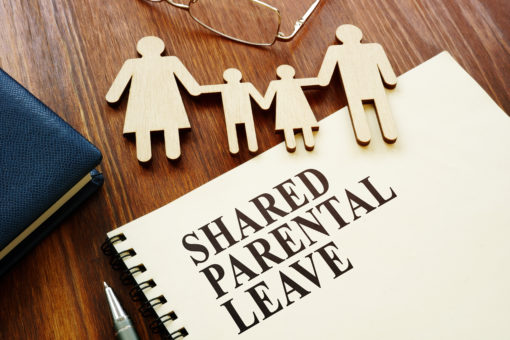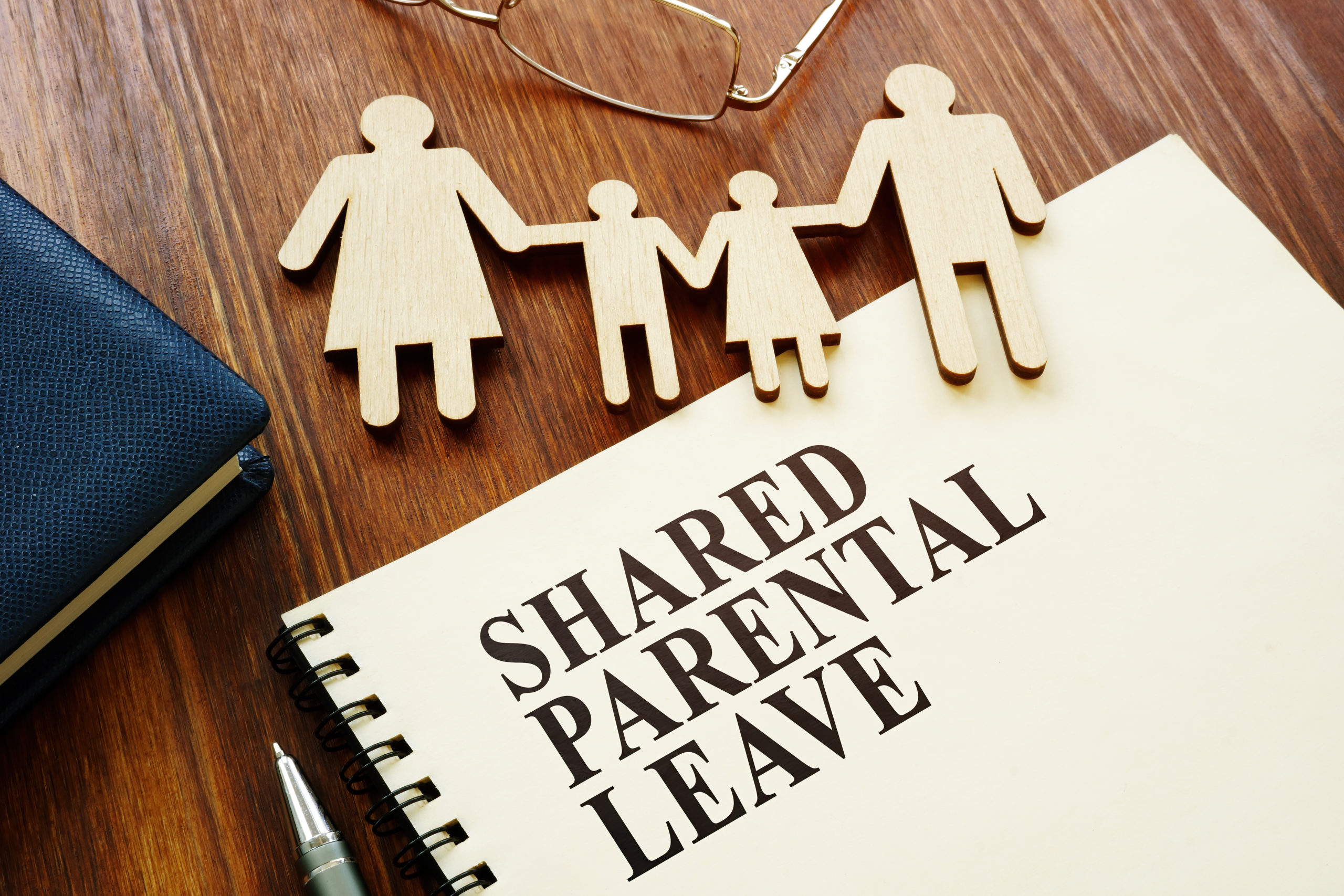What’s required? What’s optional? And what are the requirements surrounding eligibility, notice and record keeping? Here’s our guide.

Part 2 of this guide looks at paternity leave, shared leave and adoption leave. For Statutory Maternity Leave and Statutory Maternity Pay, please see Part 1
Shared Parental Leave
It’s fair to say that shared parental leave, introduced in the UK in 2015 to bring parental benefits kicking and screaming into the 21st century, has not exactly changed the face of childcare. In 2018, only 1% of parents who could have taken shared leave did so. Nevertheless, whilst shared leave may be a rarity, it is something employers need to be prepared for.
How does Shared Parental Leave (SPL) work?
SPL must be taken before the baby’s first birthday or within a year of adoption. Eligible parents get up to 50 weeks SPL and up to 37 weeks of Shared Parental Pay (ShPP) which they can take in up to three blocks. The ‘blocking’ system helps prevent the additional problems that would be caused for payroll departments if parents were entitled to switch leave responsibilities repeatedly.
Under SPL rules, eligible parents can split leave between them in a number of ways:
- They can both be off at the same time
- They can split the leave between them and be off at different times
- The birth parent can return to work and their partner can take SPL
- The birth parent can return to work shortly after birth (but no sooner than 2 weeks after birth) and take SPL later in the year
Is my employee eligible to take SPL?
To be eligible for SPL your member of staff must be sharing parental responsibility with their spouse, partner, joint adopter or the child’s other parent and both parties must be eligible for Statutory Maternity Leave (SML), Statutory Maternity Pay (SMP), Maternity Allowance (MA) or adoption pay/leave. If only one partner qualifies, neither will be able to take SPL.
Is my employee eligible to get Shared Parental Pay?
Your member of staff is eligible for ShPP providing they are either:
- Eligible for SMP or Statutory Adoption Pay (SAP); or
- Eligible for Statutory Paternity Pay (SPP) and their partner is eligible for SMP, MA or SAP
When can shared leave start?
The first two weeks after childbirth must be taken by the birth partner as maternity leave. For factory workers this increases to four weeks.
At that point, parents can end maternity leave and start SPL.
How much is ShPP?
ShPP is paid for 37 weeks at whichever is the lower of 90% of the earnings of the parent taking leave or the government’s standard rate. As an employer, you can choose to pay more, but you will only be able to claim back the statutory amount which is 92% of SPL (or 103% if your company qualifies for Small Employers’ Relief).
You will pay the ShPP and claim it back – and if you outsource your payroll your provider will manage this for you. If you can’t afford to pay you can apply for advance payments from HMRC.
Paternity Leave
Statutory Paternity Leave is available to biological fathers, a child’s mother’s husband, partner or same sex partner, or an adoptive parent.
Your employee is entitled to up to two weeks’ leave in addition to their regular leave entitlement, and paternity leave must be taken in one block. Leave cannot start earlier than the birth date and must end within 56 days of birth.
Is my member of staff eligible for paid paternity leave?
In addition to the need to fulfil the ‘paternity’ element above, your employee must also have worked for your company for at least 26 continuous weeks by the end of the 15th week before the week of the due date or, in the case of adoption, by the end of the week the employee was matched with a child for adoption.
How much is Statutory Paternity Pay?
Like SMP and ShPP, the rate is either 90% of earnings or the government’s standard rate, whichever is lower. As an employer, you can choose to pay more, but you will only be able to claim back the statutory amount which is 92% of the rate (or 103% if your company qualifies for Small Employers’ Relief).
As with SMP and ShPP, payroll will arrange to pay SPP which you will then need to reclaim from HMRC. If you can’t afford to pay you can apply for advance payments.
Adoption Leave
The duration of Statutory Adoption Leave is up to 52 weeks, with 26 weeks treated as ‘Ordinary’ and the final 26 treated as ‘Additional’. The effect of that is the same as for maternity leave. Eligibility is much the same as for SMP. Pay rates are also the same as SMP (90% of the gross average wage for six weeks the 90% or the statutory rate (whichever is lower) for the next 33 weeks.
Notice and proof requirements for Statutory Adoption Leave (SAL)
The major differences between SMP and SAL lie in the notice required and the proof an employee needs to provide.
- Your employees need to give you 28 days’ notice of the date they want to be paid Statutory Adoption Pay (unless the time between matching and placing makes that impossible)
- Within seven days of being matched with a child, they should apply for SAL, tell you the amount of leave they want, the start date and the date the child will be placed with them
- Notification doesn’t have to be in writing unless you decide otherwise
- You have 28 days to confirm their start and end dates
You must keep records of the proof the employee gives you, which must show the following:
- Name and address of your employee
- Name and address of the adoption agency
- Date the child was matched (e.g. a matching certificate)
- Expected date of placement (a letter from the agency will usually confirm this)
In the case of overseas adoptions, you should also ask to see:
- Official notification from a UK authority confirming the parent is allowed to adopt
- Evidence of the date the child arrived in the UK
To find out how we can help take the payroll burden out of managing parental and other statutory payments, talk to us.

